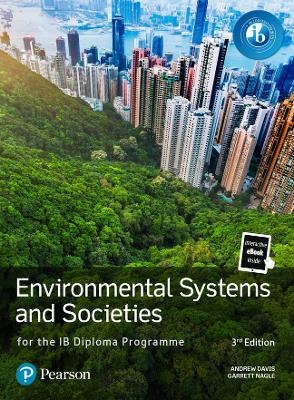
Contemporary Environmental Issues
Kendall/Hunt Publishing Co ,U.S.
978-1-5249-8073-3 (ISBN)
- Titel nicht im Sortiment
- Artikel merken
New Fifth Edition Now Available!
Scientists say we are in a new stage of the Earth's history, the Anthropocene, when we humans have become the globe's principal agent of change.
To begin a shift toward a "sustainable society," significant action is required now on a range of issues. Fortunately, people are capable of changing their behaviors and values. Often these changes stem from exposure to new information or experiences.
Contemporary Environmental Issues exposes readers to the extent of our impact on the Earth's ecosystems, as well as the challenges we face in trying to strike a balance between development and conservation. By exposing readers to such information and experiences, it develops a level of environmental literacy that is necessary for dealing with the challenges of the 21st century.
Contemporary Environmental Issues presents a candid analysis of the major environmental issues the world currently faces and encourages students think about how the environment affects their lives and how their actions affect the environment.
Available in print and eBook formats, Contemporary Environmental Issues:
Covers arguably the most pressing issues we face: population growth (and food), energy, atmospheric pollution, ozone depletion, climate change, deforestation, biodiversity loss, soil degradation, and water quantity and quality.
Presents the current state of scientific knowledge, yet, is written at a level that is digestible by the non-science major.
Encourages Critical Thinking! Students are encouraged to find solutions to environmental problems using ethical, aesthetic, political, and cultural perspectives, in addition to basic science and economics.
Integrates up-to-date, thoroughly reviewed illustrations, diagrams, data, and references from some of the world's leading scientific journals.
Preface
Chapter 1: Welcome to the Anthropocene
Introduction
Morality and the Great Acceleration
Putting a Price on Nature and Its Services
The Need for Environmental Stewardship
Chapter 2: Human Population Growth
Introduction
Fundamentals of Population Growth
Human Populations
The Challenge of Feeding 9 Billion People
Concluding Thoughts
Chapter 3: The Environmental Impact of Our Search for Energy
Introduction
Powering Our Planet: Current Energy Sources
Energy and the Environment
Fossil Fuels
Nuclear Energy
Renewables
Where To Now?
Chapter 4: Air Pollution and Atmospheric Deposition
Introduction
Defining Air Quality
The Six Criteria Pollutants
The Air Quality Index (AQI): A Guide to Air Quality and Your Health
NOx, SOx, and Acid Deposition
Concluding Thoughts
Chapter 5: Stratospheric Ozone Depletion
Introduction
Formation, Measurement, and Function of Ozone
Ozone Depletion over the Poles
The Recipe for Ozone Loss
What Is Being Done?
Concluding Thoughts
Chapter 6: Global Climate Change
Introduction
CO2 and the Greenhouse Effect
Changing Global Temperature
Predicting Future Trends in CO2 and Temperature
Possible Effects of Global Warming
Moving Forward
Concluding Thought
Chapter 7: Deforestation
Introduction
What Is Deforestation?
Rates of Tropical Deforestation
Agents of Deforestation
Drivers of Deforestation
Case Study: Deforestation and Forest Recovery in Costa Rica
Concluding Thoughts
Chapter 8: Biodiversity: The Sixth Mass Extinction
Introduction
How Many Species Exist?
Biodiversity Principles
Global Diversity and Hotspots
Species Loss and Extinction
Characteristics of Threatened Species and Conservation Strategies
Protecting Biodiversity in the U.S.: The Endangered Species Act
Saving the World's Species: What's in It for Us?
Concluding Thoughts
Chapter 9: Soil Degradation
Introduction
The Science of Soil
Soil Erosion: Natural vs. Accelerated
How Much Soil Are We Really Losing?
Impacts of Soil Loss
Progress in Soil Conservation
Concluding Thoughts
Chapter 10: The Water Crisis
Introduction
The Hydrological Cycle
Groundwater Aquifers
How Much Water Do We Use?
Water Quality
A New Way Forward: Focusing on Watersheds
Concluding Thought
Chapter 11: There Is No Planet B
Introduction
How Much Growth Can Our Planet Support?
Is Population Really the Driver of Environmental Degradation?
Calculating Humanity's Ecological Footprint
Concluding ThoughtsGlossary
Index
| Erscheint lt. Verlag | 4.1.2019 |
|---|---|
| Verlagsort | Iowa |
| Sprache | englisch |
| Themenwelt | Naturwissenschaften ► Biologie ► Ökologie / Naturschutz |
| ISBN-10 | 1-5249-8073-0 / 1524980730 |
| ISBN-13 | 978-1-5249-8073-3 / 9781524980733 |
| Zustand | Neuware |
| Haben Sie eine Frage zum Produkt? |
aus dem Bereich


